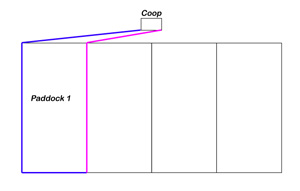
 2
2









https://LibreLeafAcres
Theodosia, MO
USDA Zone: 6b (-5 to 0 °F/-20.6 to -17.8 °C)




Brenda
Bloom where you are planted.
http://restfultrailsfoodforestgarden.blogspot.com/








 1
1




 3
3








Brenda
Bloom where you are planted.
http://restfultrailsfoodforestgarden.blogspot.com/








 To much in my yard dies back or weakens during the winter months.
To much in my yard dies back or weakens during the winter months.








L8Bloomer wrote:
I still can't get past Paul's claim that one can leave the chickens for days without input - that suggest not putting birds in at night, or doing so in a way that they do it themselves but no predators can get in. How does that work??




organick wrote:
Jami,
I just want to clarify a little bit. Earlier you said you have not seen paddock works but using moveable fence in different location you have seen work. Are they not sort of the same idea? Or are you saying the moveable fencing allowed for movement into more different areas, thus giving the ground more time to recover?
I am also assuming (perhaps incorrectly) that when you say free ranged over several fields you are talking about a mobile coop of sorts and field far enough apart the chickens wont wonder all over?

















L8Bloomer wrote:
Jami, what an interesting idea (this will sound crazy to some, but I grew up in the 'burbs...). The chickens roosting in the barn with the other animals, and where the dog is free to roam (always wondered how I was going to raise a LGD and gain him access to the chicken paddock while keeping other predators out!)...
We don't have a barn (one day...sigh! my dream to own a barn) but would love to hear more about how this works.
 Think mote where the dog is the water around your chicken house.
Think mote where the dog is the water around your chicken house.




















www.thehappypermaculturalist.wordpress.com





https://LibreLeafAcres
Theodosia, MO
USDA Zone: 6b (-5 to 0 °F/-20.6 to -17.8 °C)
 4
4












https://LibreLeafAcres
Theodosia, MO
USDA Zone: 6b (-5 to 0 °F/-20.6 to -17.8 °C)




Myrth
https://ello.co/myrthcowgirl
 1
1




New location. Zone 6b, acid soil, 30+ inches of water per year.
https://growingmodernlandraces.thinkific.com/?ref=b1de16
Growingmodernlandraces.com affiliate
 3
3




Standing on the shoulders of giants. Giants with dirt under their nails




 3
3




https://LibreLeafAcres
Theodosia, MO
USDA Zone: 6b (-5 to 0 °F/-20.6 to -17.8 °C)

|
I will suppress my every urge. But not this shameless plug:
Rocket Mass Heater Resources Wiki
https://permies.com/w/rmh-resources
|





